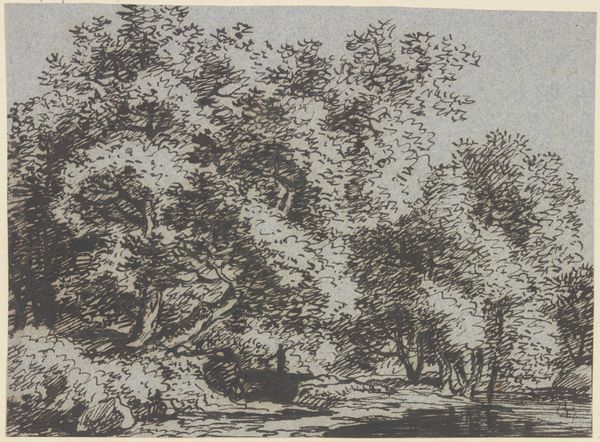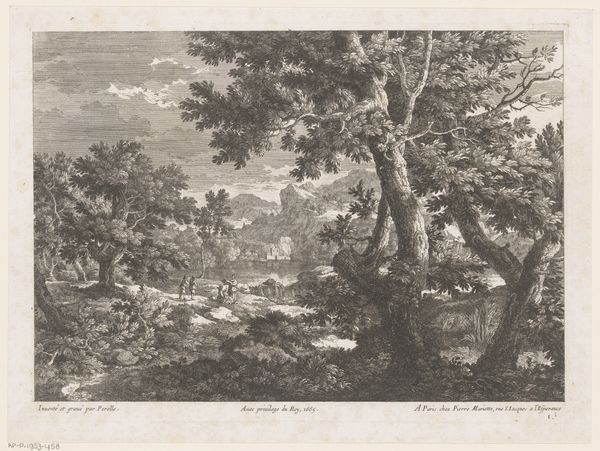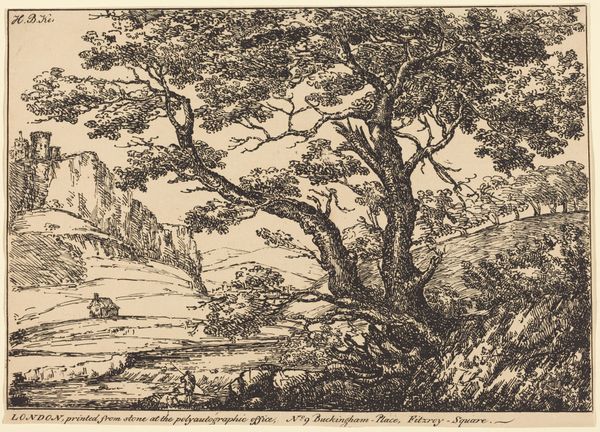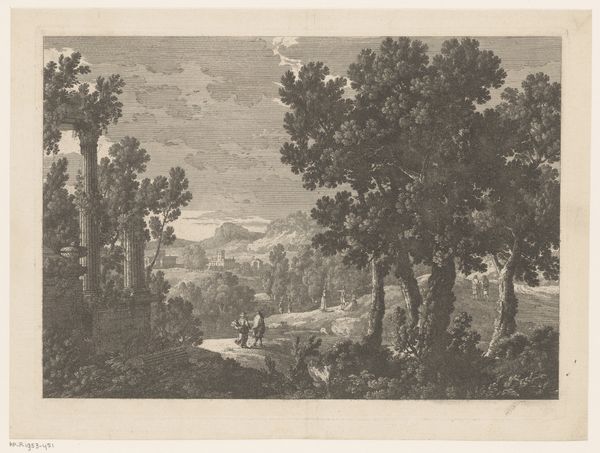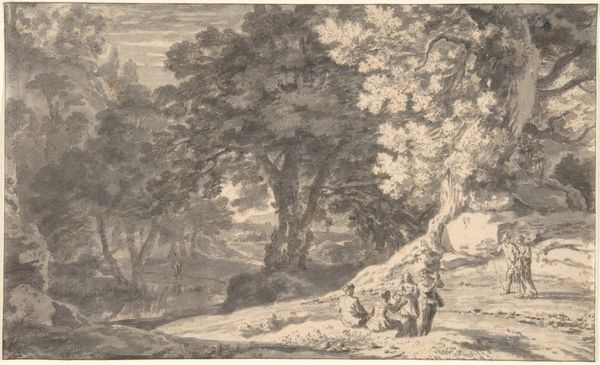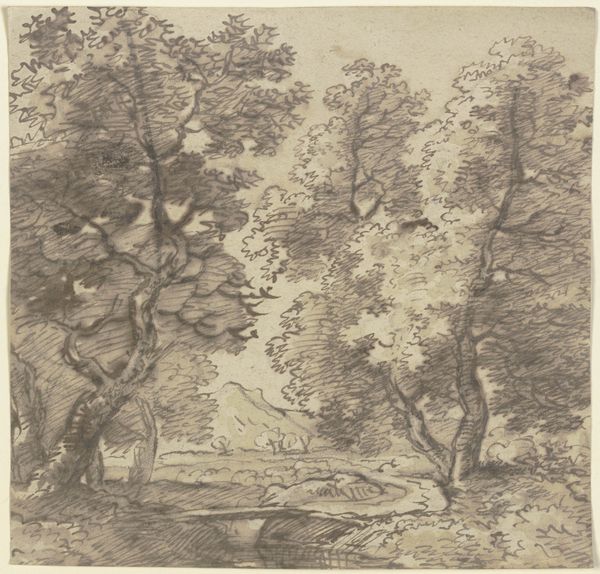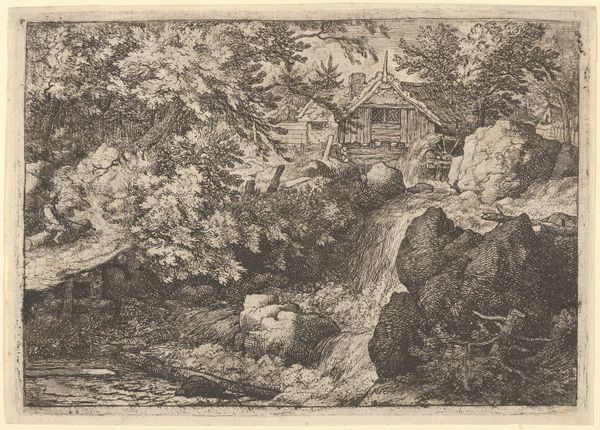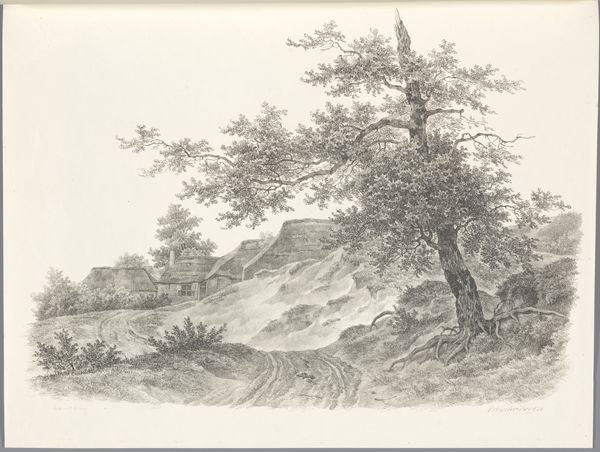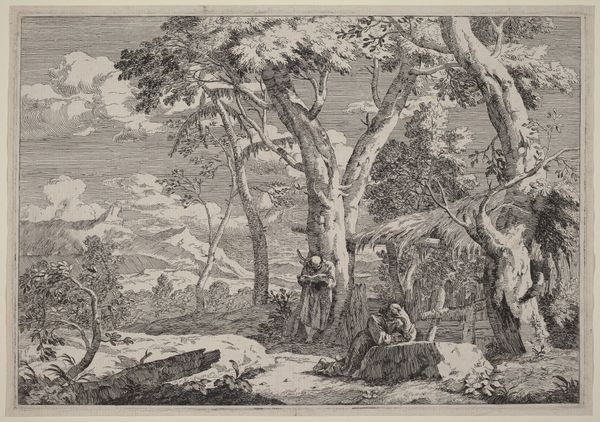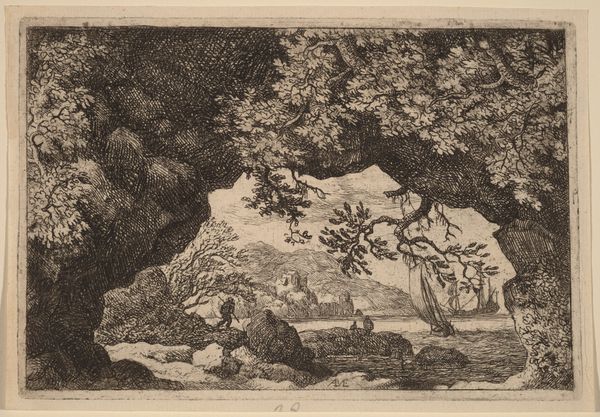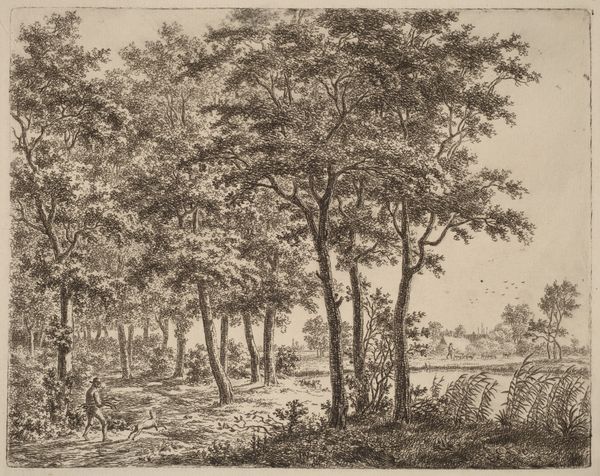
print, etching
#
baroque
# print
#
etching
#
landscape
#
nature
#
pencil drawing
Dimensions: height 226 mm, width 320 mm
Copyright: Rijks Museum: Open Domain
Curator: This is "Boslandschap met drie figuren," or "Wooded Landscape with Three Figures," an etching made by Nicolas Perelle sometime between 1613 and 1695, now held at the Rijksmuseum. Editor: The image appears soft, tranquil. It almost looks like a pencil drawing. There's a subtle layering effect as you move back into the landscape. Curator: The technique of etching lends itself well to that impression. The fineness of the lines, combined with the variations in their density, create a delicate atmospheric perspective. Look how Perelle suggests depth through the density of the foliage. Editor: Precisely! Notice also how the trees that frame the composition act as a proscenium, leading your eye towards those figures in the middle ground and further into the distant landscape. It feels like a stage. What do you know about its public reception at the time, were these images created as luxury items, or did the accessibility of printmaking serve a broader viewership? Curator: That’s an interesting angle. Printmaking, certainly enabled wider distribution of images compared to unique paintings. The composition itself invites that. The arrangement has almost geometric qualities. Notice the balance between the dense foliage on either side and the opening to the distant hills. It isn't merely a recording of nature, but a composed vision. Editor: True. It’s clearly been idealised, and that informs its political function, of course. Was this work connected with particular social groups, or ideological beliefs of its time? Also, the medium really suits it. The etching seems to create that slight sense of nostalgia—a removed serenity. Curator: Indeed. While landscape art in the 17th century wasn't explicitly political, these pastoral scenes promoted values of order, harmony, and an appreciation for the natural world. I can say, looking at this piece, that Perelle does more than recreate the reality of an exterior, imbuing the image with structure and his subjective feelings. Editor: Thank you. After seeing this piece and thinking of its position at that moment in history, my perception has changed somewhat—allowing it to appear with fresh relevance. Curator: I agree, recognizing Perelle's conscious structural decisions truly helps illuminate his vision of this wooded scenery.
Comments
No comments
Be the first to comment and join the conversation on the ultimate creative platform.


